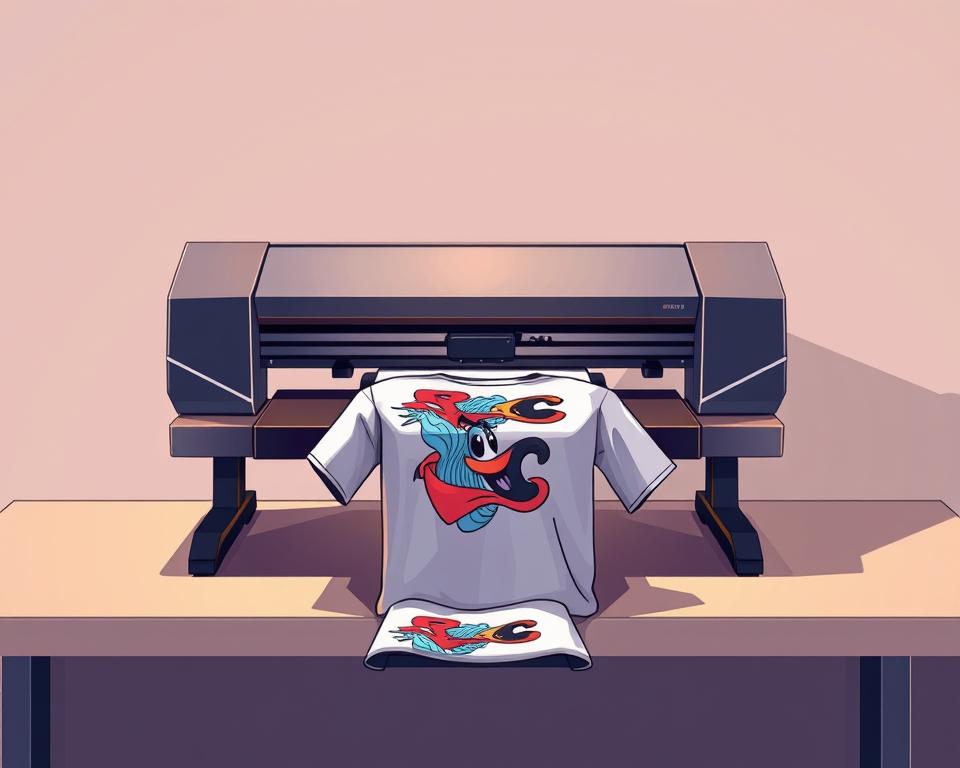Original Designer Furniture Hong Kong for Elegant Estates
What is required to convert a house into a high-end retreat? All comes down to the details—carefully selected items merging contemporary style with classic artistry. Stockroom actualizes that idea, delivering top-tier collections that transform elegance.
Stockroom, with galleries in Wan Chai and Mong Kok, is your top choice for luxury. View over 358 thoughtfully selected products, sold in-store or online. We provide VIP perks such as bespoke marble dining tables and tailored upholstered sleeper sofas to match your personal taste.
Living in Wan Chai means you get same-day delivery within three kilometers. Boost your interior with Coffee table Hong Kong, where every selection embodies sophistication and superior quality.
Core Messages
- Stockroom serves as an elite luxury venue, operating in both Wan Chai and Mong Kok.
- Premium assortments combine modern flair with enduring workmanship.
- Explore in excess of 358 selected pieces both in-store and online.
- VIP services include custom marble tables and upholstered sofa beds.
- Same-day delivery is offered for Wan Chai customers within a 3km radius.
Hong Kong Designer Furniture 101
Hong Kong thrives as an energetic hub for novel home styling. The locale fuses old-world charm and new-age aesthetics, forming a special arena for sophistication and imagination. For more than fifteen years, Stockroom has contributed to that evolution, procuring European-grade furnishings that revolutionize refinement.
Our Wan Chai and Mong Kok galleries display an eclectic array of designs. From Modern Vintage to Industrial Loft and Scandinavian Minimalism, there’s something for every taste. Each piece is crafted with precision, ensuring both beauty and durability.

We’re proud to introduce cutting-edge materials like scratch-resistant ceramic tabletops. These upgrades merge utility and aesthetics, optimal for current homes. Be it a makeover or a blank slate, our lines provide limitless opportunities.
Those in need of a tailored touch can rely on our VIP design advisors. Our design team cooperates with you to fashion spaces showcasing your singular vision. Head to Stockroom today to see the finesse of premium home decor.
Leading Luxury Dining Table Options
Enhance meals with upscale tables uniting elegance and purpose. At Stockroom, we offer exclusive pieces designed to make every meal memorable. Our line showcases the popular ten-person solid oak table with butterfly leaves for extra flexibility. Priced between $51,380 and $72,780, this table is a timeless investment for your home.
When you want a sleek look, our expanding marble table rises above. Priced from $42,380 and featuring an 18-month assurance, it offers stress-free confidence. Whether entertaining guests or dining with family, these tables command attention.
Deciding on round or rectangular tables is tied to space and design visions. Circular tables evoke cozy vibes, ideal for smaller interiors. Rectangular tables, conversely, provide plenty of seats and a timeless design. We stock each style to suit varying tastes.
Looking after your luxury table is undemanding yet vital. Wipe with a gentle cloth on wooden areas, steering clear of strong cleansers. Concerning marble tables, consistent sealing retains their immaculate surface. Adhering to these instructions sustains your table’s star quality.
Getting a superior table is effortless with our funding solutions. For purchases over $30,000 HKD, we offer flexible payment plans to suit your budget. Visit Stockroom today and find the perfect dining table to improve your home.
Polished Sofas for Your Living Room
Explore the complete combination of ease and elegance in our sofa assortment. If you want a showstopper or a practical feature, our sofas intend to advance your living room.
The three-seat Italian leather sofa is beloved by many. Featuring USB charging slots, it accommodates modern-day needs. The minimalist shape and quality materials allow it to be a room’s focal point.
Animal lovers benefit from our stain-repellent upholstery that stands up to wear and wipes down easily. After prolonged use, these covers keep their crisp appearance, perfect for lively homes.
Within our Stockroom furniture range, you’ll find space-efficient sleeper sofas. Including memory foam padding, these sofa beds ensure excellent comfort for staying friends or family. Great for limited-space environments, these units blend usefulness and fashion.
For cushion cores, we provide duck-feather fill or high-rebound foam. Duck feather provides a plush, luxurious feel, while high-resiliency foam offers firm support. All alternatives are made to keep their structure long-term.
| Cushion Filling | Features | Best For |
|---|---|---|
| Duck Feather | Soft, opulent comfort | Comfort seekers |
| High-Rebound Foam | Sturdy backing, long-lasting | Durability-focused buyers |
Take advantage of our current floor model discounts, with savings of up to 40% off. These genuine floor samples are sold for a short period, so take advantage to boost your living area.
Stylish Side Tables and Cabinets
Renew your setting with useful yet trendy elements that meld seamlessly into your design. Spanning ceramic top accent tables to industrial metal display cabinets, our lineup affords versatility and class for every room.
Marble-accented nesting tables are a standout choice. Each model offers secret storage, suited to tight quarters. Their sleek design adds a touch of sophistication while keeping your essentials organized.
Our secure display cabinets are essential for any collection. They combine security and refinement for exhibiting valued artifacts. The tempered glass doors ensure visibility while protecting your items.
Oenophiles will enjoy our climate-balanced sideboards. Crafted to maintain wine in prime conditions, these buffets integrate practicality and modern flair. They make a superb enhancement to dining or lounge spaces.
Mountable console tables suit petite apartments by maximizing space. They deliver practicality while upholding fashionable looks. Their uncluttered design integrates with any decor, giving broad adaptability.
Finish your decor with our coordinated living room bundles. Offering a 15% discounted bundle, these collections present corresponding side tables and cabinets. Using a synchronized styling method makes your room appear seamless and refined.
If you need a focal accent or a functional necessity, our range covers all needs. Check out our trendy side tables and cabinets now to uplift your home’s look.
Luxury Light Fixtures to Enhance Your Home
Lighting is vital for creating atmosphere and elevating your home’s vibe. Stockroom presents upscale fixtures fusing aesthetics and useability to renew any environment.
Our height-adjustable pendant lamps, ranging $6,080 to $8,180, create a standout feature in your dining or living room. These versatile pieces allow you to customize the height and angle, ensuring the perfect fit for your room.
To add a contemporary element, consider our Smart LED setups beginning at $21,180. These mobile-controlled setups include circadian rhythm modes, altering brightness to imitate daytime light. It boosts ease and backs your natural routine.
Looking for a statement piece? Our Murano glass chandeliers with dimmer switches add a touch of elegance to any room. Meticulously crafted, these chandeliers offer both utility and breathtaking aesthetics.
Eco-efficient LED options are also a focal point of our range. They may slash your electricity expenses by up to 40%, providing an eco-friendly and wallet-friendly option. Combine them with our weatherproof patio lights for a fluid indoor-outdoor flow.
All orders come with expert installation support to guarantee flawless setup. Whether updating or embarking on a fresh start, Stockroom delivers optimum lighting fixtures to light up your area.
Stylish Chairs for Every Space
Seats are beyond mere furniture—they express both design and coziness. Whether you’re furnishing a cozy living room or a sleek office, the right chair can transform your space.
Our Herman Miller-style ergonomic office chairs combine performance and ease. Costing $10,480–$13,880, they offer customizable lumbar support and ventilated mesh backing. Ideal for extended work sessions, these chairs unite practicality and contemporary style.
To introduce opulence, check out our bouclé leisure chairs paired with ottomans. They are excellent for building a calm corner in your dwelling. Their gentle fabric and subdued shades allow them to fit into various decors.
Dining chair material is crucial. Wood delivers timeless appeal, whereas metal adds a contemporary twist. Conversely, acrylic chairs bring a smooth, minimalistic presence. Each material has its unique charm, so choose based on your style and needs.
Exterior areas need consideration as well. Stackable seating featuring UV-shielding retains brightness under intense sun. Lightweight and durable, they’re perfect for patios or balconies.
Seize our special deal: Buy one and get a second item 50% off on select models. This fleeting sale gives you an opportunity to refine your interior on a budget.
- Ergonomic office chairs for productivity and comfort.
- Bouclé comfort chairs with ottomans for a warm hideaway.
- Dining chair options in wood, metal, or acrylic for varied preferences.
- UV-protected stackable patio chairs for lasting use.
- Buy one, receive a second at 50% discount for select ranges.
Dining Space Essentials
Designing a dining area that’s welcoming yet opulent begins with core essentials. From an optimal table to trendy seating, all details combine for a seamless and upscale appearance.
Appropriate table heights span 28″ to 30″ to accommodate multiple chair types. Use this simple reference to pick the proper pairing:
| Chair Type | Ideal Table Height |
|---|---|
| Standard Dining Chairs | 28″-30″ |
| Taller Bar Stools | 36 in – 42 in |
| Prep Counter Stools | 24″-26″ |
Coordinate your table with stain-resistant cloths from Stockroom’s home accents line. These fabrics balance usefulness and trendiness, helping you clean effortlessly while upping dining elegance.
For hosting aficionados, china cabinets with glassware storage features are vital. These cabinets keep your fine china and glassware organized and easily accessible, ensuring every meal feels special.
Finalize your dining decor with our ten-piece place settings, featuring assorted styles. They offer every piece required to form an elegant, coordinated table display, suitable for ordinary or extraordinary meals.
Require design support? Our space planning specialists are on hand. Whether it’s a broad open room or a tight dining corner, our specialists will design a layout balancing aesthetics and utility.
From solid oak tables to paired chairs, Stockroom supplies everything needed to advance your dining space. Drop by today to find the ideal items to revolutionize your room.
Definitive Luxury Materials
The heart of elegance is within the materials that constitute it. Beginning with responsibly sourced oak to 304 stainless steel and top-tier marble, each option offers singular traits and strength. Discover the selections that represent grace and utility.
In terms of wood, oak, walnut, and teak excel for sturdiness and charm. Refer to this mini guide:
| Wood Type | Durability | Best Use |
|---|---|---|
| Solid Oak | Very High | Dining tables, credenzas |
| Natural Walnut | Balanced | Small furnishings |
| Solid Teak | Very High | Deck furniture |
Antibacterial copper alloy coatings revolutionize frequently used surfaces. These finishes not only look sleek but also help maintain hygiene, making them ideal for kitchens and bathrooms.
Thermal-resistant ceramic layers are another forward-thinking feature to review. Perfect for kitchen surfaces, they withstand high temperatures while maintaining their pristine appearance. Hence they’re functional and fashionable.
Unsure which material suits your space? Take advantage of our material sample program. We supply mailed samples at no cost, permitting hands-on evaluation before deciding.
For eco-conscious individuals, sustainable picks like bamboo composite are superb. They endure wear and time and also support green living, fitting contemporary ethics.
Covering established wood to modern metal and ceramic coatings, optimal materials craft an opulent oasis. Browse our offerings now to find what suits your home.
Compact Designer Furniture Choices
Stretching space in compact homes relies on clever, classy furnishings. Stockroom zeroes in on items fusing versatility and flair, maximizing every bit of space.
Wall beds, starting at $34,280, are a game-changer for studio apartments. They close up neatly, creating extra floor surface throughout the day. Match them with fold-out coffee tables ($7,080–$7,680) to create an adaptable arrangement.
Dual-purpose ottomans with built-in storage combat clutter. They function as extra chairs, footstools, or mini tables, and keep your items neatly hidden.
For at-home professionals, desks with height options are critical. They settle snugly into cramped areas, granting ergonomic relief and modern design. Narrow-depth sofas, measuring under 32″, are another excellent choice for tight areas, ensuring comfort without overwhelming the room.
Reflective furniture smartly magnifies ambient light and simulates a larger area. Be it cabinet units or console tables, they bestow sophistication and the sense of a bigger interior.
Need design assistance? Our HK$1,800 space planning consultation offers specialist input to perfect your arrangement. Be it arranging a studio or a petite apartment, Stockroom has the best solutions to update your home.
Everlasting Pieces for a Traditional Home
Building a classic abode entails combining old-world charm with modern chic. Stockroom carries chosen furnishings that defy fads, preserving your style for the future.
Chesterfield sofas at $47,780 demonstrate perpetual appeal. With their tufted leather and rolled arms, they add a touch of sophistication to any living room. Team them with Persian-designed rugs costing $64,880 for a harmonious visual of grandiosity.
History lovers should check out our reproduction antique writing desks. Every reproduction displays hand-tooled wood patterns, illustrating the craft of historic periods. These writing tables aren’t merely useful; they’re masterpieces.
Vintage textile motifs from European looms contribute extra refinement to our lineup. Below is a comparison of our most popular patterns:
| Pattern | Origin | Best Use |
|---|---|---|
| Classic Damask | French Mills | Upholstery, curtains |
| Toile de Jouy | British Weavers | Decorative chairs, cushions |
| Italian Brocade | Italian Mills | Accent furniture |
We also offer restoration services for heirloom pieces, ensuring they retain their beauty for generations. If you have a cherished heirloom or a retro discovery, our specialists will restore it to glory.
Our restricted-edition, numbered series are a collector’s delight.
Each piece is unique, making it a valuable addition to any home.
Check out our classic pieces now to craft a home narrating your tale.
Cost-Savvy Luxury: Sale Selections
Scoring high-end Sectional Sofa Hong Kong affordably is simpler than you imagine. Our select sale offerings deliver top-notch quality minus the top-tier price. Whether you’re looking for a stylish sofa bed or a complete dining set, we’ve got you covered.
Look at our present specials: sofa beds priced from HK$8,980 and dining sets from HK$7,980. These designs knit elegance and utility, suited to any dwelling.
Grab our three-day flash sale items, updated each week. These fleeting deals offer our hot-ticket items at record-low price points. Don’t delay—these savings vanish soon!
To slash prices further, check our floor samples discounted by up to 60% off the original price. These pieces are in excellent condition and ready to improve your space.
Explore our clearance corner for previous-season finds. They meet the needs of those seeking trendy pieces on a budget. Furthermore, each sale piece includes extended warranties, ensuring放心购买.
VIP club members are granted early looks at every sale, so they can claim the finest offers ahead of time. Enroll in our VIP circle today to access luxury bargains.
Personalized Furniture Options
Creating a personalized environment is a breeze with our tailored offerings. Whether aiming for a signature showpiece or a practical element, our services promise each piece aligns with your vision.
Begin with our tailor-made marble tables, built to your exact requirements. Offering a lead time of eight to twelve weeks, these tables justify the pause.
Pick from multiple dimensions and surface options to suit your decor.
Our reupholstery service lets you renew beloved furnishings. Boasting more than two hundred fabric samples, you can remake a worn sofa or chair into a fresh style. From bold patterns to neutral tones, the choice is yours.
Modular shelving options furnish versatility across more than 15 designs. Whether you need storage for books, decor, or both, these systems adapt to your needs. Great in compact nooks or spacious halls, they meet form and function.
Infuse individuality with custom monogram services on leather items. Whether sofas or ottomans, these singular monograms ensure unique furniture.
The 3D mock-up tool allows you to visualize the finished space ahead of time. Test assorted configurations, color schemes, and materials to shape a room you enjoy.
For comfortable alcoves, explore bespoke window bench solutions. These pieces are tailored to fit your space perfectly, offering both comfort and storage. They’re perfect in book-reading spots or morning meal zones.
- Custom marble tables with 8-12 week lead time.
- Over two hundred upholstery swatch choices for reupholstery.
- Modular shelving systems featuring over 15 setup choices.
- Leather item monogram services.
- 3D planning and visualization software.
- Precision-fit window bench offerings.
From conceptual design through material choice, our bespoke selections suit your distinct needs. Explore these services today and create a home that’s truly yours.
Places to Buy Designer Furniture in Hong Kong
Identifying the best place for upscale home furnishings turns out to be quite straightforward. If you’re checking out our Wan Chai flagship or dropping into Mong Kok, every gallery supplies an individualized shopping experience. Every venue supplies a singular experience molded to your desires.
Come to our Wan Chai showroom on 8/F Shun Pont Commercial Bldg, where refinement and novelty converge. Here, you’ll find curated collections that blend modern design with timeless craftsmanship. Over in Mong Kok, the showroom presents a snug atmosphere, great for finding unique pieces.
Thanks to our parking validation, bringing your car is simple. Show your ticket to the desk, and we’ll arrange everything. This extra perk guarantees a smooth shopping trip from beginning to end.
If you’d like bespoke service, book a private shopping appointment. Our specialists will walk you through our offerings, aiding in finding items that fit your taste and vision. It’s a one-on-one shopping visit designed just for you.
Corporate accounts come with added benefits, including special discounts and priority access to new arrivals. Whether designing an office or staging a client’s space, our team stands by to aid.
We handle global logistics through DHL, enabling elite furnishings to reach you wherever you are. Backed by dependable service and tracking, your merchandise is guaranteed safe, prompt arrival.
From showroom visits to private appointments, every detail is designed to make your shopping experience exceptional. Drop by now to see why we lead as the top spot for luxury interior furnishings.
Designer Furniture Styling for Your Home
Your home embodies your character, and selecting the right items can alter the mood. Stockroom champions the idea of producing areas that merge utility and visual impact. Our display areas are Instagram-friendly, giving limitless suggestions for fusing classic and modern design.
Initiate by merging timeless classic pieces with modern vibes. As an example, team a traditional Chesterfield couch with chic, cutting-edge side tables. This balance creates a layered look that feels both cozy and chic. Seasonal decor kits are another fine approach to reinvigorate your interior. From toasty winter blankets to lively summer throw pillows, these bundles ease yearly style updates.
Lighting is fundamental in creating atmosphere. Integrate ambient, focused, and accent lighting to achieve dimension and warmth. Hanging lamps over dining tables, floor lights at reading nooks, and LED under-cabinet strips can reshape any area. For 2024, trending color palettes include soft neutrals like beige and taupe, paired with bold accents like emerald green or deep navy.
When you’re uncertain, our styling experts are ready to advise. At HK$5,000, our specialists collaborate with you to craft a unified, custom aesthetic. Whether you’re redecorating a single room or your entire home, we’ll guide you every step of the way.
Outfitting your place doesn’t have to be intimidating. Using appropriate pointers and supplies, you can fashion a space that’s distinctly you. Head over to Stockroom today and find out how quick it is to uplift your style.
Investing in Quality: Why It Matters
Opting for high-quality items yields long-term benefits. Despite budget-friendly furniture seeming like a steal, it often needs recurring replacements and increases spending ultimately. By contrast, luxury furnishings are crafted for longevity, providing lasting sturdiness and sophistication.
To see why quality pays, look at price-per-use comparisons. A solid-wood frame paired with a ten-year warranty might come with a heftier initial price, but its durability saves you money in the long term. Low-cost furniture, even if affordable upfront, frequently calls for replacement in a few years, rendering it a less economical solution.
Top-quality furnishings often serve as heirlooms. Expertly fashioned, they’re built to remain as heirlooms for descendants. They hold narratives and sentiments, thus transcending function as valued keepsakes.
Stockroom embraces its promise of superior quality. Our repair services ensure your furnishings retain top form for many years. Additionally, our authentication services guarantee that every item you purchase is genuine and crafted to the highest standards.
Should you want to renew, our trade-in initiative offers a green method to modernize your space. Present your former collections, and we’ll aid you in discovering new pieces that reflect your evolving preferences. It’s a seamless process that combines convenience with luxury.
By investing in excellence, you’re not merely acquiring furniture—you’re forging a timeless heritage. Explore our collections today and discover the difference that craftsmanship and care can make in your home.
Closing: Improve Your Home with Hong Kong Designer Furniture
Your home deserves the best, and Stockroom delivers just that. Through personalized design services and VIP advisory, we guarantee each item mirrors your distinct taste. Come to our galleries to feel opulence in person or peruse our e-catalog from your living room.
Capitalize on our special financing promotions to make obtaining luxury easier. To receive customized guidance, set up a private appointment with our consultants. They can instruct you through our curated assortments to identify the right match for your place.
Register for our loyalty scheme to obtain advantages like early sale viewing and private discounts. Act fast and check our ongoing specials—head to our site now to start turning your home into a palace of sophistication.








